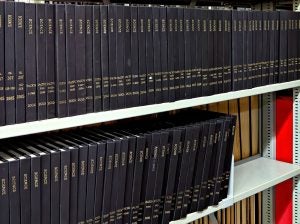How exactly do we “do” science?
The scientific method probably comes to mind. Observe a phenomenon (generally problem related), speculate about the root causes, develop a hypothesis, test in a carefully controlled environment (using variables/treatments), draw conclusions about the effect of XYZ, compare to your original hunch, and report your findings in a peer-review journal. And don’t forget to meticulously spell out your methodology, so your lab coat brethren can try to replicate your results. Reproducibility is the gold standard.
For scientists, all the steps through peer-review are a cakewalk. That’s methodically (pun intended) embedded in our DNA.
But the next steps aren’t so practiced. You’ve decided that this trailblazing work is worthy of public reporting. Time to work with the media on a news release.
This is venturing into unfamiliar territory and represents a potential short in the communicative circuit. Complex ideas have to be distilled to the lay audience.
For decades, the “embargo” has been the standard in science communication.
While we’re not talking about a trade embargo, this other kind of embargo does similarly stifle the free exchange of goods — in this case, information.

Embargoes involve a preview of the science topic in question. In theory, the embargo is designed to give reporters deliberative pause — time to consult with subject matter experts to craft an accurate story. In return, the media outlet agrees not to release the information before a set date. A publication’s rep can be enhanced (as a go-to source for science reporting), circulation expanded, and new revenue streams realized. Seems like a win.
In practice, it’s a frenzied underbelly of tightly controlled information. It’s also clever public relations maneuvering. For example, a hysterical, prewritten news release can be directed to select media outlets. Frame it as a newsworthy scoop — we’re giving this reporter early access after all — provided they don’t release it until we say so.
Use the time between receipt and public release to hone (harmonize and properly frame?) your messaging as per our specifications. Quid pro quo. And definitely don’t give outside commentators (e.g. scientists outside that privileged network) access to the actual meat and potatoes to critically evaluate. We’ll graciously frontload the availability of our results, but not our methods — at least not until the fanfare has died down. This works particularly well for divisive and controversial topics, and the PR types behind this want the panic to hit on all cylinders.
The optics just seem shady. Little scrutiny or quality control. An audacious audition that reeks of (at least perceived) collusion between researchers and reporters — ironically, scientists leveraging the media to take other researchers out of the evaluative loop. Kind of a gag order plus a no-compete clause. There’s also the issue of “pack journalism,” where a privileged bloc receives advance information to the detriment of their peers.
But aren’t these “peer-reviewed” studies? There’s built in assurances of quality control, so no need to be skeptical, right? They generally are peer-reviewed, by a few reviewers. Despite this, science can still be porous (e.g. poor quality papers still seep through). Hence the need for a broader community to review and comment post-publication. The most responsible researchers use various pre-print venues as well, a kind of mass solicitation hub for expert feedback well in advance of formal peer-review. This multi-layered approach minimizes trickles and reaffirms public confidence in the scientific method.

Admittedly, I’ve been a party to the embargo juggernaut. As a subject matter expert, I’ve received nothing but a pre-written news release (essentially a generic summary of the research), linking to a study that wasn’t yet live. Not much substance, but I jotted down questions. Was my editor supposed to release the canned news release verbatim? We waited until the actual study was released before I weighed in. Did we miss the frantic “scoop”? Probably, but it got an honest evaluation.
That’s a proper rendition of science communication in the ever-important “last mile” public reporting leg. Science can’t be participatory and objective when we’re denied the tools to evaluate the merits of a study.
In my experience, embargoes basically ask you for a full-fledged review based off the trailer. That’s absurd, we know it’s rarely representative of the movie as a whole. To me, embargoes represent a scarlet letter, something about the experimental design and/or conclusions are suspect, so we’ll take a populist, “straight to the people approach” to conceal those shortcomings.
This is especially evident in the “outrage/panic of the week”-type scoop. Although embargoes are standard practice, even among mundane releases, they disproportionately fuel the worst types of jumping-the-gun controversy. Hoping to go viral isn’t a valid reason to conduct science, and potentially questionable results spread like a contagion. Good luck with that recall.
So how should we “do” science? It’s a transparent, accessible endeavor that doesn’t care about fragile egos, or hastily generated conclusions. Let news outlets decide what’s newsworthy and work at their own pace. Release studies in real time, open source, no strings attached. If it’s the tabloid dregs they covet, so be it. Or, take the journalistic high road and be a steward throughout the entire science communication spectrum.
“Do” science right, ditch the embargo and democratize.
Tim Durham’s family operates Deer Run Farm — a truck (vegetable) farm on Long Island, New York. As an agvocate, he counters heated rhetoric with sensible facts. Tim has a degree in plant medicine and is an Associate Professor at Ferrum College in Virginia.



